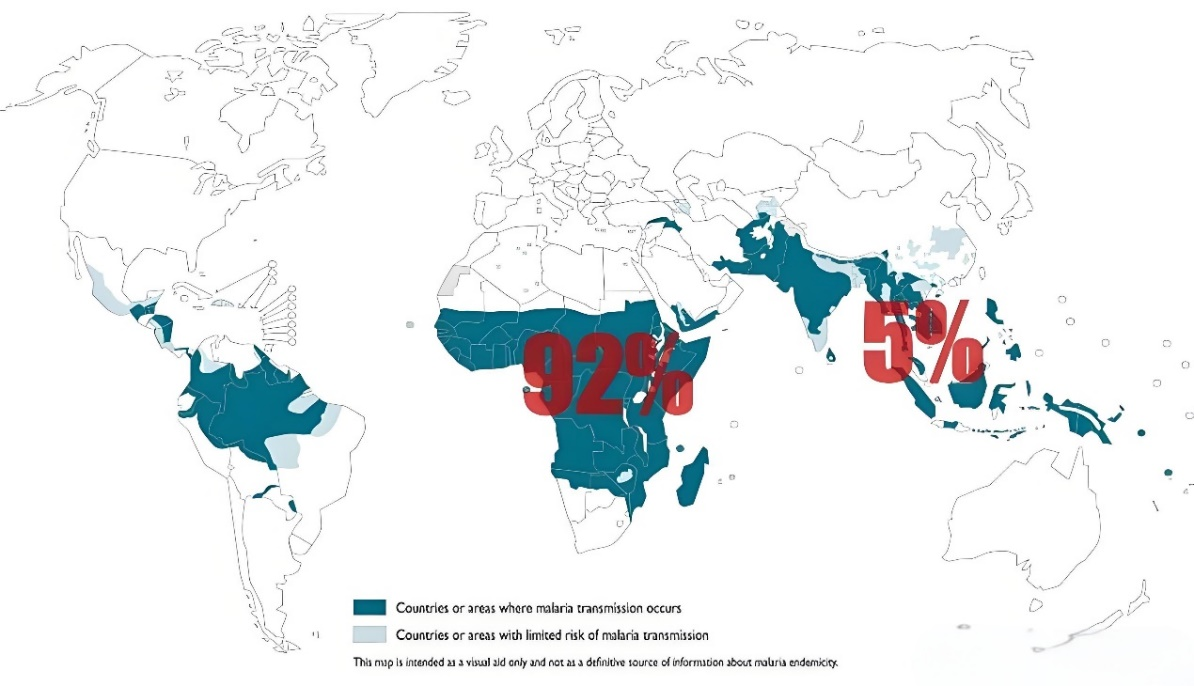Malaria is a parasitic disease caused by Plasmodium falciparum and transmitted to humans through the bite of female Anopheles mosquitoes. It is particularly common in tropical and subtropical regions. Malaria patients usually suffer from fever, headache, chills and general fatigue, which can lead to coma and death in severe cases. Despite the availability of some effective drugs and treatments, malaria, one of the oldest diseases in human history, remains a serious public health problem worldwide, infecting millions of people and killing hundreds of thousands of people every year. Especially in tropical and subtropical areas, it brings great suffering and threat to the local population. The causative agent of malaria is Plasmodium. There are four species of Plasmodium that cause malaria in humans: Plasmodium falciparum, Plasmodium vivax (P. Vivax), Plasmodium malariae (P. Malariae), and Plasmodium ovale (P. Ovale). Among them, Plasmodium falciparum and Plasmodium vivax are the most harmful. Plasmodium falciparum, the deadliest malaria parasite, is most prevalent on the African continent, while Plasmodium vivax is mainly prevalent in most countries outside sub-Saharan Africa.
Source: https://www.wendangwang.com/doc/c5e126924242321734590bc6/6
Global distribution and impact
The global distribution of malaria shows significant regional characteristics, mainly concentrated in tropical and subtropical regions, especially in some countries in Africa, Asia and Latin America, as well as Pacific island countries, which provide an ideal environment for the transmission of malaria parasites due to the favorable climatic conditions for the breeding and survival of Anopheles mosquitoes. The prevalence of malaria is closely related to climate, ecological environment, economic development level, health infrastructure, population mobility and social control capacity. Poverty, poor health conditions and inadequate medical resources have exacerbated the spread of the disease. Climate warming, population mobility, tourism and migration have also challenged prevention and control.
Source: https://www.nzxww.com/p/33069.html
From ancient quinine, chloroquinine to artemisinin, the history of human struggle against malaria is a witness of scientific and technological progress. At the end of the 20th century, Tu Youyou, a Chinese pharmacologist, discovered artemisinin, which opened a new era of malaria treatment, saved millions of lives and won the Nobel Prize.
Symptoms and effects of malaria
Typical symptoms of malaria include chills, high fever, sweating, headache, aching limbs and fatigue. These symptoms usually appear for a period of time after the infection and may recur. In severe cases, malaria can cause complications such as anemia, hypoglycemia, acute renal failure or acute pulmonary edema, and may even lead to death.
Malaria Prevention and Control
The simplest way to prevent malaria is to prevent mosquitoes. Mosquito nets, insecticides and anti-mosquito agents are all effective means of mosquito control. For malaria patients, early diagnosis and treatment of malaria will shorten the course of disease and avoid death, which will help to control malaria. Rapid and accurate diagnosis is a very important part of clinical diagnosis and treatment of malaria. The rapid diagnostic test (RDT) can be used for rapid screening of malaria, especially in remote areas where there is no condition for microscopic examination, and it can be used as a preliminary screening method for clinical malaria. RDT has many advantages, such as fast and convenient, high accuracy, easy operation, high sensitivity and specificity, so that malaria patients can be screened in a simple way, so as to enter the treatment early and avoid life-threatening.
The malaria rapid diagnostic kit independently developed by BoatBIo has superior performance, stable product, high sensitivity and strong specificity, and can quickly and accurately screen whether patients are infected with malaria.
Test results: compared with the four products, there was no reaction and discharge in the reagent card of company A, and there was cross reaction in the Pf sample of company C; The detection rate of company B is consistent with that of BoatBIo.
In the future, malaria control will require sustained efforts to:
• Insect and host biology, disease protozoa resistance studies.
• Vaccine innovation and new drug development to improve accessibility.
• Strengthen the public health system and build fairness and resilience.
• Addressing the challenges of environmental change and population mobility.
Malaria, an age-old disease, continues to pose a major threat on a global scale. We need to improve our knowledge and understanding of malaria and implement effective treatment and prevention measures to reduce the risk of infection. At the same time, we also need to strengthen international cooperation to jointly address the challenge of malaria and contribute to the cause of human health.
Post time: May-29-2024





